DRAW THE GRAPH OF INVERSE FUNCTION FROM GIVEN GRAPH
Graph the inverse for each relation below (put your answer on the same graph).
Problem 1 :
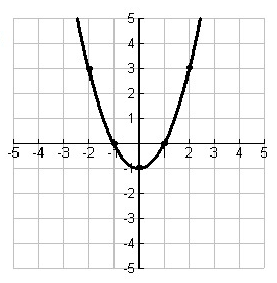
Solution:
By observing the points from the graph of f(x),
(-2, -3) (-1, 0) (0, -1) (1, 0) and (2, 3)
Representing it as table,
|
x -2 -1 0 1 2 |
y -3 0 -1 0 3 |
Inverse function:
Let f-1(x) be the inverse of the given function f(x). To get the points on the graph of inverse function, we have to exchange the values of x and y.
Points to the plotted to make inverse function.
|
x -3 0 -1 0 3 |
y -2 -1 0 1 2 |
Points on Inverse graph :
(-3, -2) (0, -1) (-1, 0) (0, 1) and (3, 2)
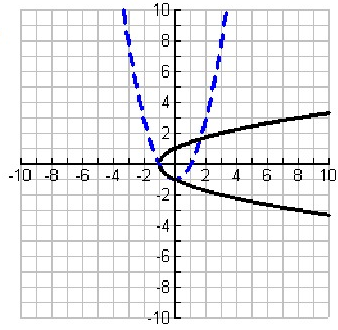
Problem 2 :
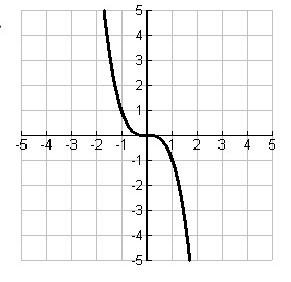
Solution:
By observing the points from the graph of f(x),
(-1, 1) (0, 0) and (1, -1)
Representing it as table,
|
x -1 0 1 |
y 1 0 -1 |
Inverse function:
Let f-1(x) be the inverse of the given function f(x). To get the points on the graph of inverse function, we have to exchange the values of x and y.
(1, -1) (0, 0) and (-1, 1)
|
x -1 0 1 |
y 1 0 -1 |
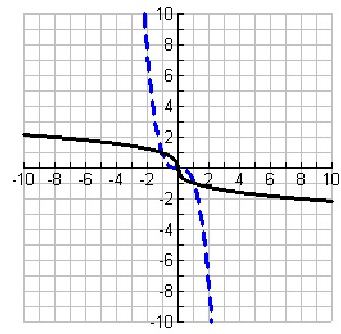
Problem 3 :
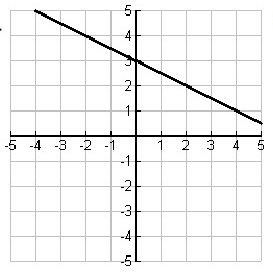
Solution:
By observing the graph, we get the points
Points of f(x) :
(-2, 4) (0, 3) (2, 2) (4, 1)
Points to be plotted on f-1(x) :
(4, -2) (3, 0) (2, 2) (1, 4)
|
For f(x)
|
For f-1(x)
|
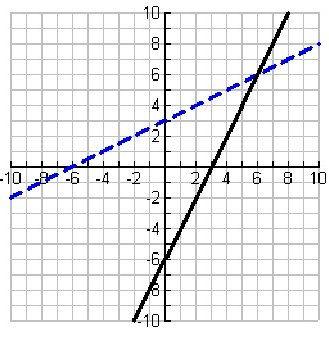
Problem 4 :
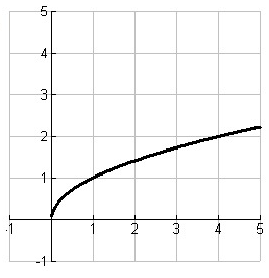
Solution:
Points of f(x) :
By observing the points from the graph of f(x),
(0, 0) (1, 1) and (4, 2)
Representing it as table,
|
x 0 1 4 |
y 0 1 2 |
Inverse function:
Let f-1(x) be the inverse of the given function f(x). To get the points on the graph of inverse function, we have to exchange the values of x and y.
(0, 0) (1, 1) and (2, 4)
|
x 0 1 2 |
y 0 2 4 |
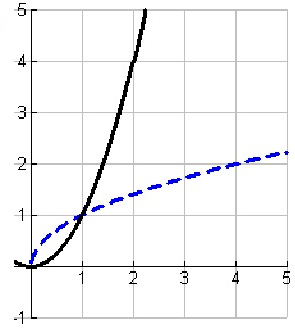
Problem 5 :
a. Use the graph of the function to complete the table for f-1.
b. Then use the table to sketch f-1.
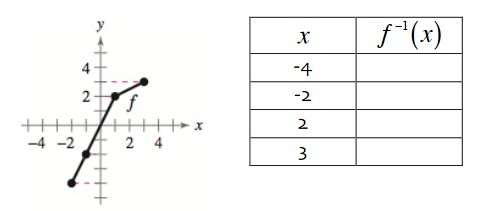
Solution:
a.
Points of f(x) :
By observing the points from the graph of f(x),
(-2, -4) (-1, -2) (1, 2) and (3, 3)
Representing it as table,
|
x -2 -1 1 3 |
y -4 -2 2 3 |
Points to be plotted on f-1(x) :
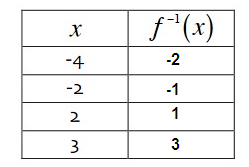
b.
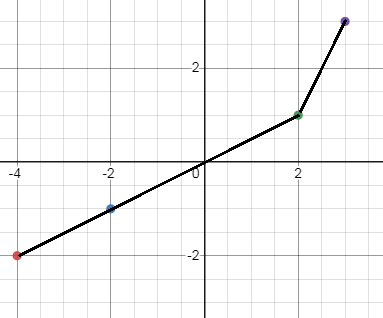
Problem 6 :
Use the graphs of f and g to evaluate each expression.
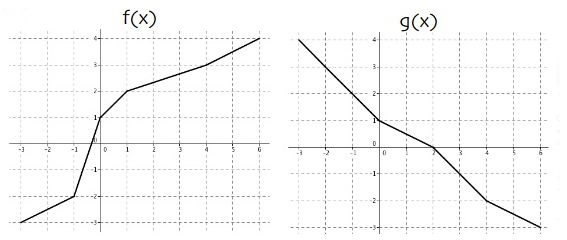
1. f-1(1)
2. (g-1)(0)
3. (f ∘ g)(0)
4. g(f(4))
5. (f-1 ∘ g)(0)
6. (g-1 ∘ f)(-1)
7. (f ∘ g-1)(2)
8. (f-1 ∘ g-1)(-2)
Solution:
f(x) :
|
Function f(x) :
|
Inverse function f-1(x) :
|
g(x):
|
Function g(x) :
|
Inverse function g-1(x) :
|
1.
f-1(1) = 0
2.
(g-1)(0) = 2
3.
(f ∘ g)(0) = f(g(0))
= f(1)
= 2
4.
g(f(4)) = g(3)
= -1
5.
(f-1 ∘ g)(0) = f-1(g(0))
= f-1(1)
= 0
6.
(g-1 ∘ f)(-1) = g-1(f(-1))
= g-1(-2)
= 4
7.
(f ∘ g-1)(2) = f(g-1(2))
= f(-1)
= -2
8.
(f-1 ∘ g-1)(-2) = f-1(g-1(-2))
= f-1(4)
= 6
Problem 7 :
1. If the composite functions f(g(x)) = x and g(f(x)) = x then the function g is the ________ function of f.
2. The domain of f is the ________ of f-1 and the ________ of f-1 is the range of f.
3. The graphs of f and f-1 are reflections of each other in the line ________.
4. A function f is ________ if each value of the dependent variable corresponds to exactly one value of the independent variable.
5. A graphical test for the existence of an inverse function of is called the _______ Line Test.
Solution :
1) If f ∘ g (x) = g ∘ f(x), then f and g a re inverse to each other.
2) The domain of f is range of f-1 and range of f is domain of f-1.
3) The graphs of f and f-1 reflection of y = x.
4) one to one
5) The horizontal line test is used to check if the function is one to one.
Problem 8 :
Match the graph of the function with the graph of its inverse function. [The graphs of the inverse functions are labeled (a), (b), (c), and (d).]
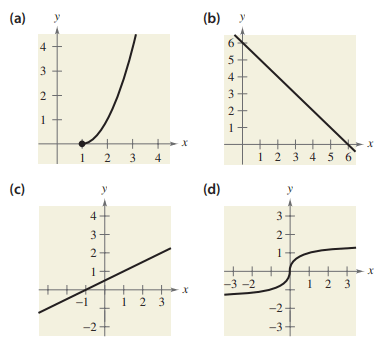
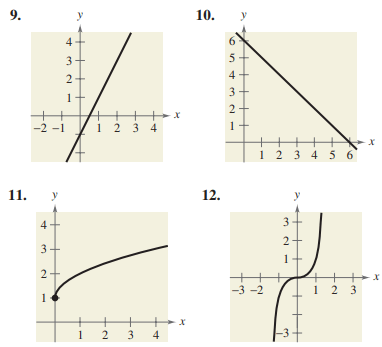
Solution :
Question a :
Some of the point in the graph a :
(1, 0) (2, 1) (3, 4)
Points on inverse function (0, 1) (1, 2) (4, 3)
Question b :
Some of the point in the graph b :
(1, 5) (2, 4) (3, 3) (6, 0) and (0, 6)
Points on inverse function (5, 1) (4, 2) (3, 3) (0, 6) (6, 0)
Question c :
Some of the point in the graph c :
(1, 1) (-1, 0) (3, 2)
Points on inverse function (1, 1) (0, -1) (2, 3)
Question d :
Some of the point in the graph d :
(1, 1) (0, 0) (-1, -1)
Points on inverse function (1, 1) (0, 0) (-1, -1)
Answers :
Question a ==> 11
Question b ==> 10
Question c ==> 9
Question d ==> 12
Recent Articles
-
Finding Range of Values Inequality Problems
May 21, 24 08:51 PM
Finding Range of Values Inequality Problems -
Solving Two Step Inequality Word Problems
May 21, 24 08:51 AM
Solving Two Step Inequality Word Problems -
Exponential Function Context and Data Modeling
May 20, 24 10:45 PM
Exponential Function Context and Data Modeling